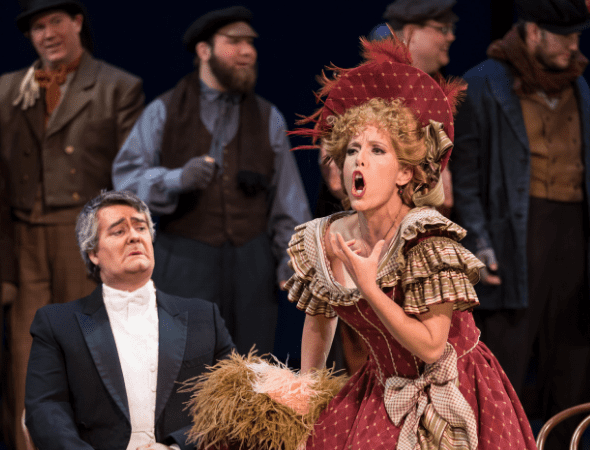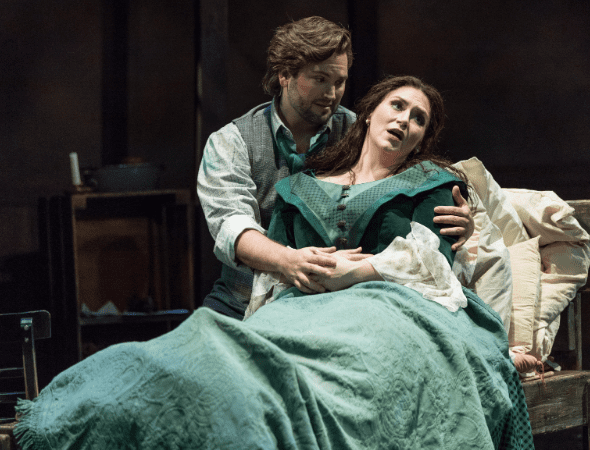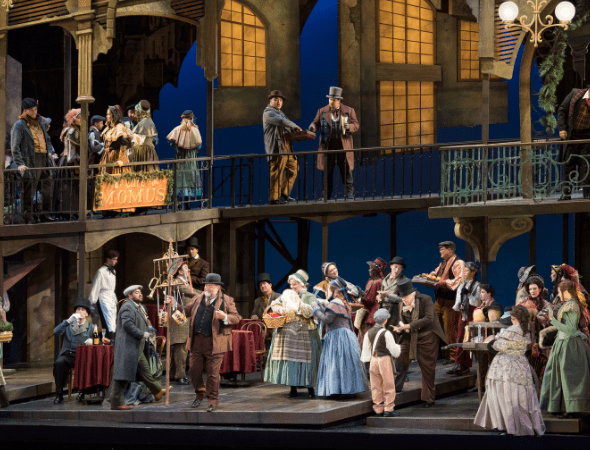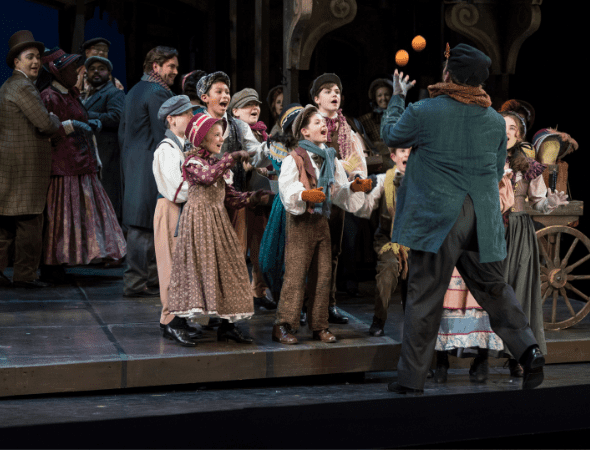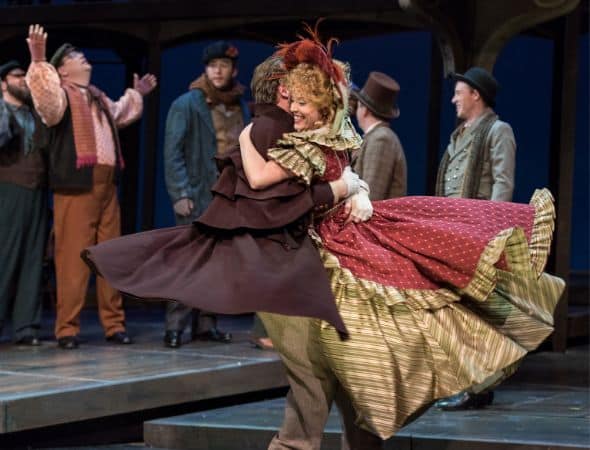

Four struggling bohemians—a poet, a painter, a musician and a philosopher—are living together in Paris when their lives are changed forever one freezing night. Their neighbor Mimì unexpectedly strikes the match of first love when she knocks at the door looking for a candle light. But as Mimì’s health declines, our four starving artists are sharply awoken to the harsh realities of life, in true operatic fashion.
With some of opera’s best-known music, Puccini captures the thrill of young love and the devastation of untimely loss in this timeless classic.
For deeper insights, explore the resources provided below.
PLAYBILL
PROGRAM NOTES
By Michael Clive
Opera in Four Acts
Music by Giacomo Puccini
Libretto by Luigi Illica and Giuseppe Giacosa
Based on the fictionalized memoir
Scènes de la vie bohème by Henri Murger
To Be Young, In Love, and In Paris
I don’t understand the Parisians
Making love every time they get the chance
I don’t understand the Parisians
Wasting every lovely night on romance
This charming lament comes to us from a girl named Gigi—the gawky teenager poised on the brink of womanhood in Hollywood’s 1958 best-picture Oscar- winner. Her words are funny precisely because we do understand the Parisians. We know that they are surrounded by the joys and sorrows of love in the most romantic city on earth…that to be young, in love and in Paris is a universal ideal of romance. And we know that soon, inevitably, Gigi will know it, too.
Puccini’s swooningly emotional evocation of young Parisians in love has made La bohème, by some reckonings, the most popular opera ever composed. The story of the lovers Mimì and Rodolfo and their band of friends ends sadly, with Mimì’s death. Still, it is far gentler than the gritty operas— often violent and shockingly sexualized— that brought Puccini to prominence as the foremost composer of Verismo (“realistic”) operas. The turn away from romanticism and idealism toward realism was reflected in books ranging from Balzac’s La Comédie humaine and Zola’s Germinal to the novels of Charles Dickens and stories of Guy de Maupassant; on the opera stage, Bizet’s 1875 masterpiece Carmen shocked respectable Parisians with its frankness, opening the way for Puccini’s close colleagues Leoncavallo and Mascagni. Their accounts of sex, squalor and street life in Cavalleria rusticana and Pagliacci astounded audiences in 1890 as Carmen had 15 years earlier. In 1893 Puccini’s first big hit, Manon Lescaut, grafted an elegant veneer onto an equally sordid story. By 1895, when Puccini composed La bohème, operagoers were eager for just such a music-drama as this—one that combined a realistic account of illness and the privations of urban poverty with a glowingly sympathetic portrayal of young love.
Henri Murger, the source for the episodes dramatized in La bohème, wrote from firsthand experience. Like Puccini’s Rodolfo (and like the George Orwell of Down and Out in Paris and London), Murger was born to financial privilege and spent time “slumming” for the sake of his art; he spent the 1840s writing now-forgotten poetry while living in a series of frigid attic apartments and hotel rooms in Paris’s Latin Quarter, an area that housed the lower class and a large student population. If Murger’s hardships were real, his choices suggest a certain dilettantism…a kind of willful wantonness. His disapproving father withheld financial support, forcing Henri to resort to writing personal essays to help pay the rent. Urged on by a friend, he produced some thirty installments entitled Scènes de la vie de Bohème, which were published in 1848 in the satirical Parisian periodical Le Corsaire. The following year these vignettes, which together told a realistic and largely autobiographical story of life and love on the seamy Left Bank, were rewritten as a play. Its tremendous success secured Murger sufficient income to move to the more respectable side of the Seine.
Although Murger died relatively young, his stories have endured. His use of the word “bohemian” came to identify for later generations the poverty-stricken, footloose lifestyle of aspiring young artists and youth in rebellion. It’s easy to see why these tales, when animated by Puccini’s genius, are irresistibly popular. Who hasn’t experienced the pleasures and pains of everyday life? The vicissitudes of hardship, poverty and despair? The pleasures of a good meal and the company of friends? Murger’s stories were so apt for this purpose that in the space of nine years they inspired operas by three different composers. Only Puccini’s remains in the standard repertory.
LEARNING RESOURCES
Opera Talks: One hour before each performance, ticket holders are invited to join Utah Opera Principal Coach Carol Anderson to learn more about the production at a free talk in the Capitol Room of the Janet Quinney Lawson Capitol Theatre.
Post Opera Q&A: Join Utah Opera’s Artistic Director to discuss Utah Opera’s production of the opera following each performance in the Capitol Room.
Learn Before You Go: Read about the history, music, storyline, and more, through an online multiple-part learning course:



